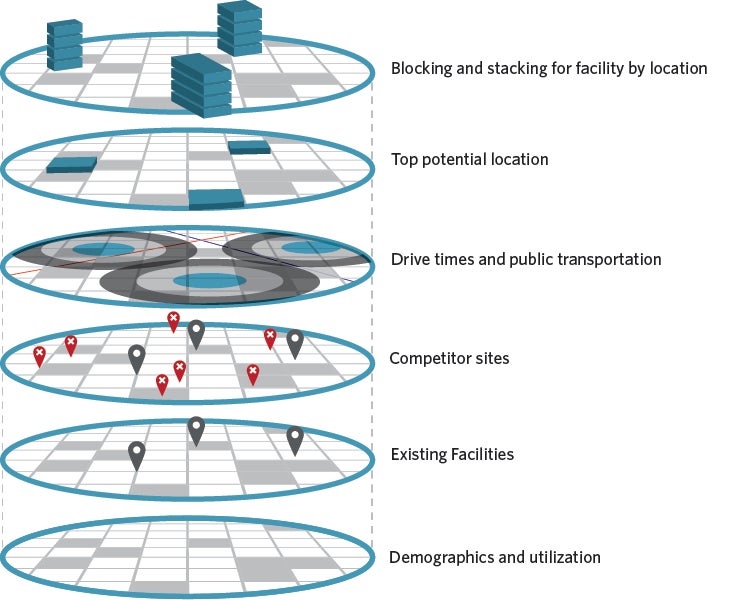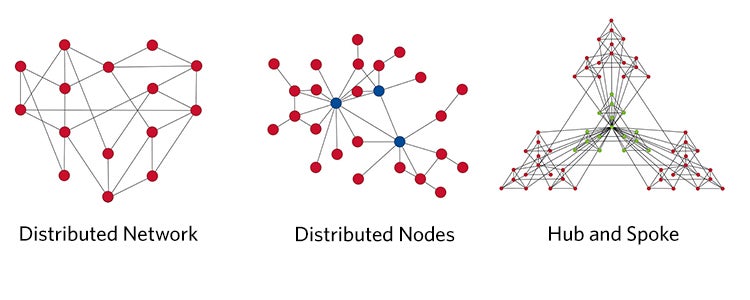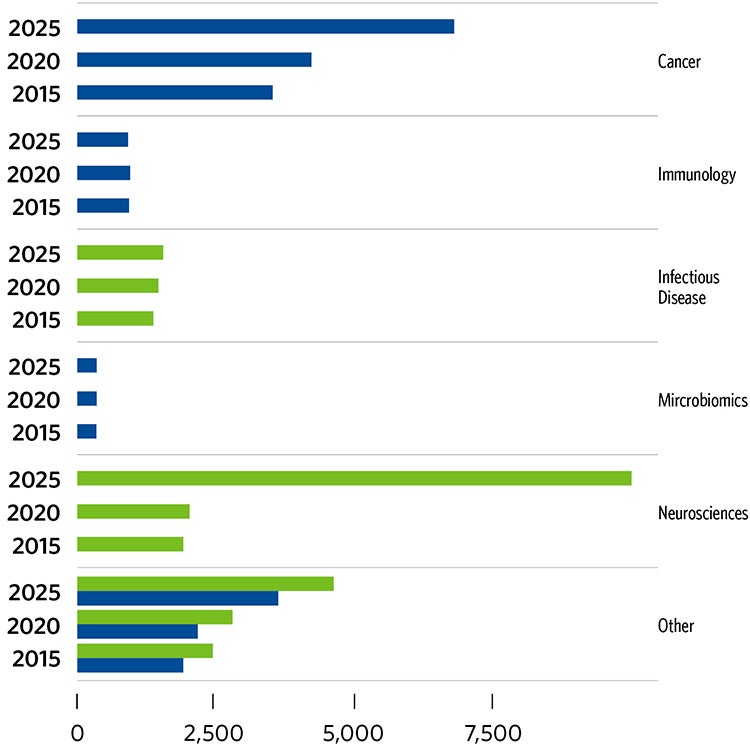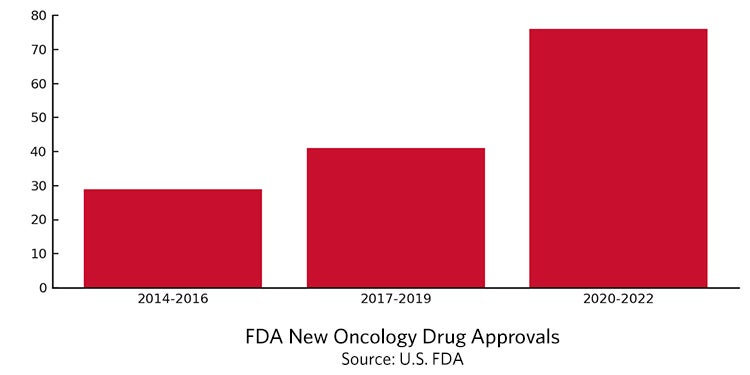
Academic Health Center Strategy and Analytics
A Long-Sighted Strategy, Aligned with Institutional Goals
Healthcare organization strategies, like facilities, must be flexible and evidence-based for long-term success. We use a data-driven foundation to understand the market, competitive environment and test scenarios for your clinical enterprise. Geospatial, analysis-based tools translate information into intuitive visual formats that empower decision making to better align planning and strategy with your goals. A detailed exploration and predictive analysis of operational, spatial and talent needs at each unique academic health center inform our approach to the healthcare-research partnership.
Market Demand Modeling and Target Location Analysis
Our market demand modeling process is unique and tailored to each client based on their detailed patient data. It integrates proprietary market research with information from multiple sources, including external vendors and client data. GIS-based tools combine multiple layers of data, including patient convenience, growth trajectory, traffic patterns and financial metrics to show the most optimal location options. Examining market share and identifying gaps — or duplication — in coverage, we develop service distribution scenarios to project the ideal location for new and existing facilities to achieve alignment between the needs of patients, providers and financial targets.

Capacity Modeling, Utilization Analysis and Service Line Rationalization
Based on our database of various benchmarks, we stress test existing facilities against projected volumes, identify operational improvement potential, and perform detailed analyses of shortages, wait times and physician recruitment targets. Capacity models produce the number of key planning units so that facilities’ demands can be translated into space needs. Our strategy leaders work with health systems to optimize network performance by aligning distribution of services with population needs and the potential to maximize utilization of resources.
Network Options and Implementation
Three types of network models have emerged: distributed network, distributed nodes and the hierarchical hub and spoke model. Implementation of these models differs across the board. In a distributed network model, low-acuity, high-volume services are redirected to ambulatory care sites. In a distributed nodes model, specialist, high-volume services are redirected to a nodal location. In a hub and spoke model, complex, low-volume care is directed to hub locations, balancing access with telemedicine support.

Research Space Strategy
National Institutes of Health research grant data indicates that growth in research grant dollars is strongly correlated with the number of investigators and, therefore, space provided for research.
Predictive Research Space Requirements
With new predictive models, we can identify areas of animal research; then we’re able to look at growth in specific species and uses to identify and predict gaps in future vivaria needs. The chart below shows expected dramatic increases in cancer and neurosciences uses from 2015 to 2025.

Predictive Clinical Research Requirements
The rapidly growing pipeline of new drugs and new approaches will require significant investment in clinical research. Newly developed therapies will require both individual testing and testing in combination with other therapies.

"... with 63 new cancer drugs launched in the past five years and hundreds more in the pipeline, the complexity surrounding treatment decisions has reached a tipping point." - Cardinal Health
Recruitment and Retention
We focus on creating spaces that support your most important asset — people. Attracting and retaining top researchers, clinicians and support staff is paramount to advancing an institution. We design welcoming and flexible research, clinical and work spaces that foster collaboration and enable teams to thrive.


